Tattoos have long been a form of personal expression, each design a story inked permanently onto the skin. But behind every intricate detail and bold outline lies a critical tool that brings these artistic visions to life—the tattoo needle. Whether you’re an aspiring tattoo artist, a seasoned pro, or just someone curious about the craft, understanding the different types of tattoo needles is essential. From creating delicate lines to shading intricate patterns, the choice of needle can make all the difference in the final masterpiece.
This article dives into the fascinating world of tattoo needle types, exploring how each one shapes the art of tattooing and contributes to the creative process.
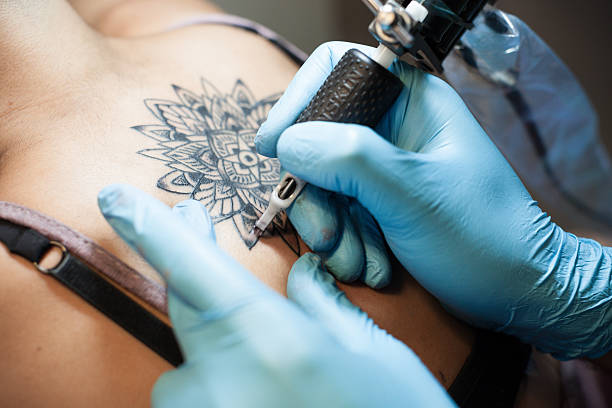
ROUND LINER NEEDLES
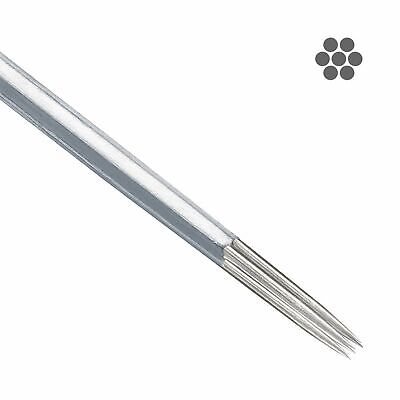
Round liner needles are designed with pins soldered in a circular formation, allowing for precise, clean lines in tattoo work. The thickness of the line produced depends on the size of the round liner you select (e.g., 01 for very fine lines, 14 for very thick lines) as well as the gauge of each pin (see Tattoo Needle Sizes below). When dipped in ink, these needles release only a small amount at a time, making it easier to control the ink flow and achieve crisp lines.
Usages: Dot work, all types of lining work from bold to intricate, script and lettering, Japanese, traditional and neo-traditional, geometric, tribal, and Samoan tattoos.
ROUND SHADER NEEDLES
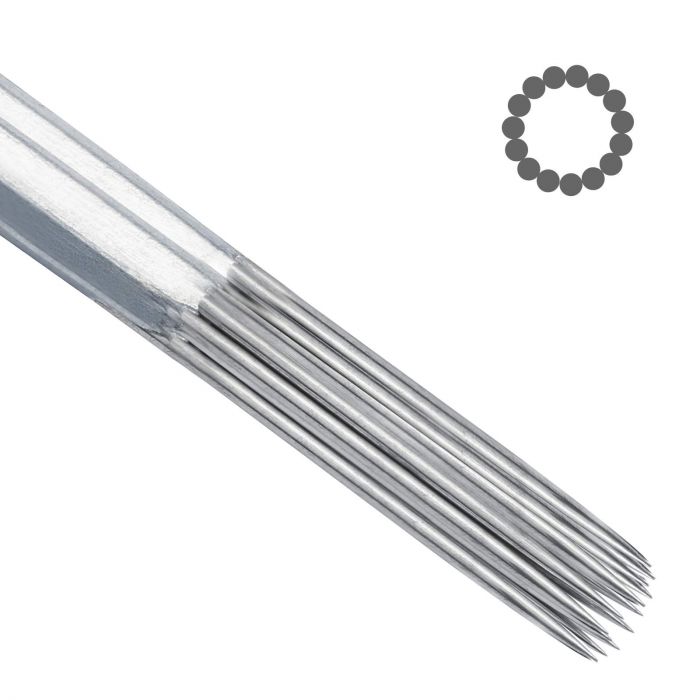
Round shaders are quite similar to round liners, with the key difference being that the pins are spaced slightly farther apart. This design allows round shaders to create thicker lines while also being versatile enough for color filling and basic shading.
Usages: Some line work, script and lettering, basic shading, color filling, Japanese, traditional and neo-traditional, geometric, tribal, and Samoan tattoos.
FLAT SHADER NEEDLES
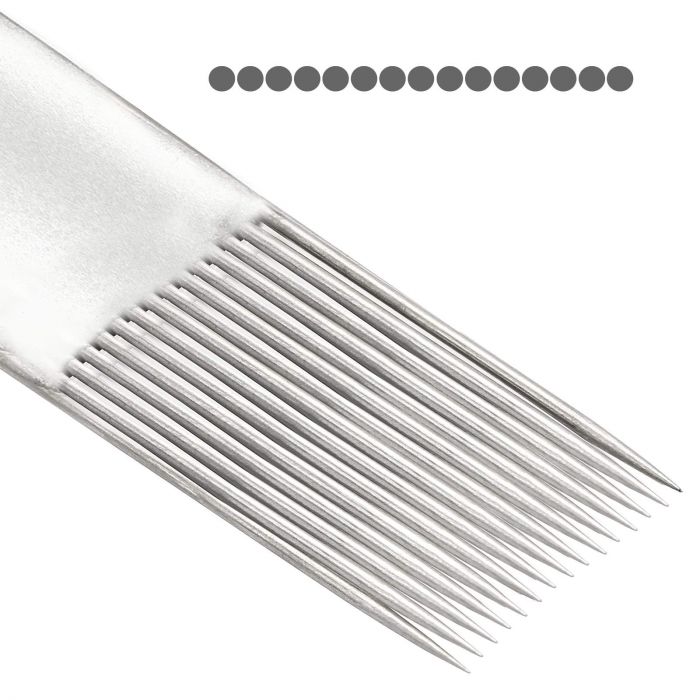
Flat shader needles consist of pins arranged in a straight line along the needle bar. This configuration allows them to deliver more ink to the skin, making them ideal for creating crisp, dark lines with just a single stroke. Larger flat needles are also effective for color fills and shading, as they can quickly deposit ink with one pass. These needles are particularly useful for detailed shading in geometric patterns and mandala work. Additionally, flat shader needles are commonly used in semi-permanent makeup.
Usages: Some line work, small shading and color packing, black and grey work, color realism, Japanese, traditional and neo-traditional, tribal, Samoan, and geometric tattoos.
MAGNUM SHADER NEEDLES
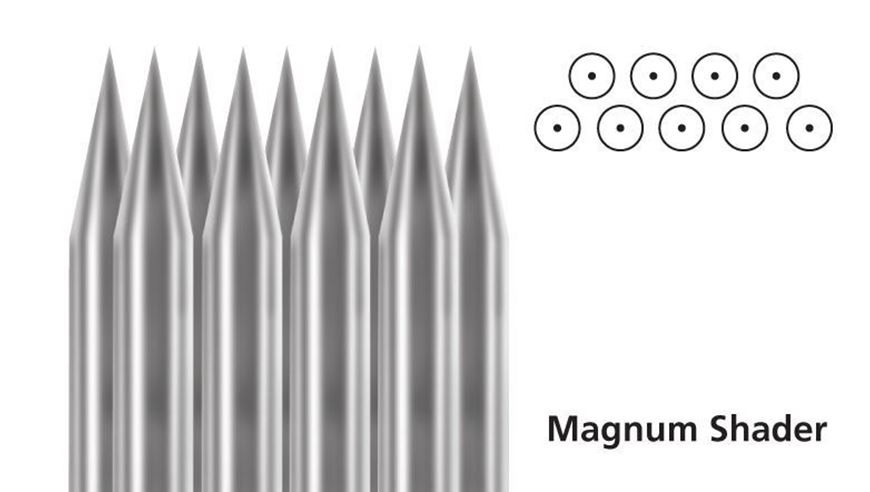
Magnum shaders are the go-to needle type for almost all shading work. These needles hold and deliver a significant amount of ink, making them ideal for covering large areas with color and creating smooth shading. Because they require fewer passes over an area to deposit ink, they cause less trauma to the skin. Magnum needles come in several variations, each suited for different types of shading and color work.
Usages: Black and grey shading, all types of shading and color packing, color realism, Japanese, traditional and neo-traditional, tribal, and Samoan tattoos.
CURVED MAGNUM SHADER NEEDLES
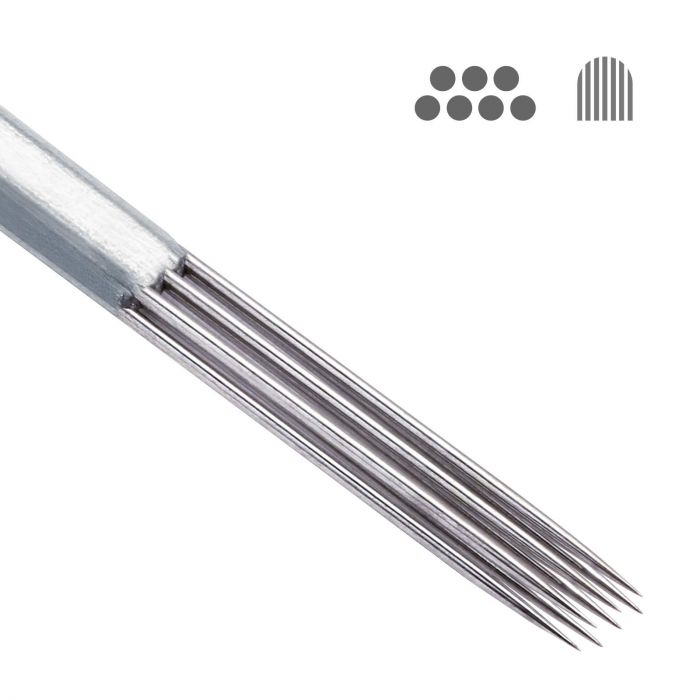
Curved magnum shaders, also known as soft magnums, soft edge magnums, or round magnums, are similar to standard magnums but with an important difference: the pins are arranged in a curved, arching pattern at the center. This design allows the edges of the needle to glide more smoothly along the skin, resulting in better ink dispersal and more consistent lines. Additionally, curved magnums are less damaging to the skin and are particularly effective for soft shading.
Usages: Black and grey shading, all types of shading and color packing, color realism, Japanese, traditional and neo-traditional, tribal, and Samoan tattoos.
DOUBLE STACK MAGNUM SHADER NEEDLES
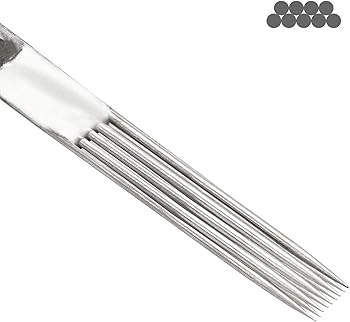
Double stack magnums, or double stacks, are not as widely used as they once were, but they still serve a unique purpose in tattooing. The pins on these needles are packed much more tightly together compared to standard magnums. This dense arrangement makes them ideal for intricate shading and color work, where you need the coverage of a magnum but with less spread.
Usages: Shading and color packing, black and grey work, color realism, Japanese, traditional and neo-traditional, tribal, and Samoan tattoos.






